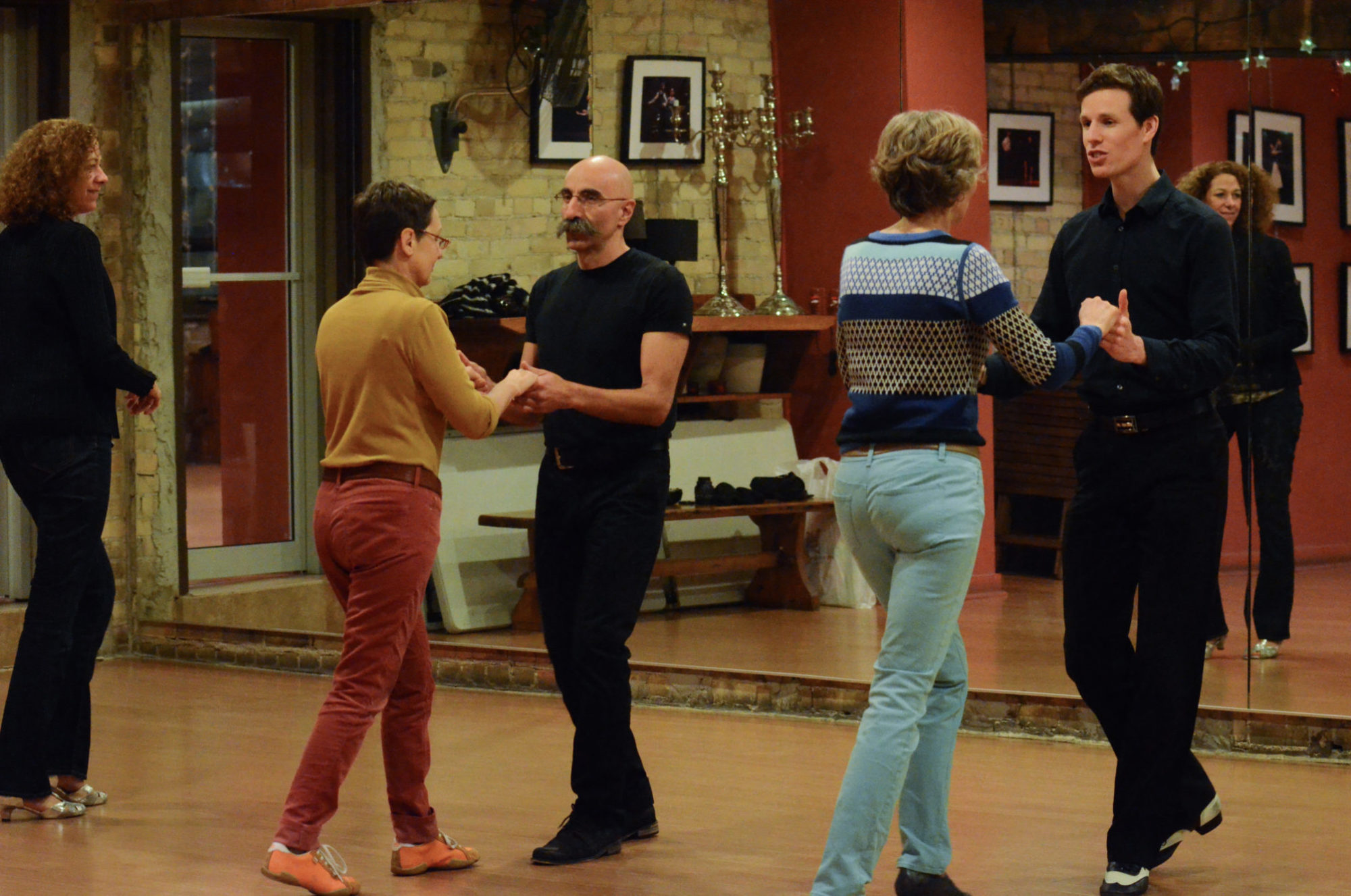In the past, I’ve tried to explain how to improve dance timing in a variety of ways. In return, I’ve frequently met with frustration. I recall one reader brusquely replying, ‘I’m not a music major.’
I needed something simpler, some ideas that worked for anyone. And so, after hours of research, I’m finally ready with five new exercises. I recently used these in a group class, and they worked great! I hope they work for you too.
1. Dance to your pulse.
We have a natural rhythm that goes on inside us all the time. In fact, some say this is why we like music in the first place! Even if the simplest music leaves you frustrated, your pulse will never let you down.
- Find a quiet space.
- Find your pulse. If you’re not sure how, watch the video below.
- Now, try snapping your fingers, tapping your foot, nodding your head, etc. to your pulse. Try to find something that still allows you to feel your pulse.
2. Use music with a clear beat.
Once you can move to your pulse, it’s time to find music with a clear beat you can switch over to. I’ve included a few of my favourites below:
Continue to tap, nod, or march to the timing you hear, whichever is easiest. Not sure what the beat is? I explain it here.
3. Count the beat.
Here’s a crazy statistic: Counting aloud gets dance timing into our bones three times faster than just stepping to the beat. Why? First, because we focus on saying the beat, and then we hear ourselves say it. How’s that for efficient learning?
Using your pulse, or one of the songs above, start counting from the first beat you hear (you might want to start the song a few times to make sure you’ve caught the first one). Count up to 8, then start over.
Next, try tapping or matching in place to your vocal count - without losing track of the beat in the music. This helps you connect what you hear to a movement in your body.
4. Count the timing.
Most instructors don’t teach dance timing by the beat, but by the rhythm of the dance they are teaching. For instance, Rumba timing is ‘slow-quick-quick’.
We can connect the timing of the dance to the beat of the music by counting one beat as a quick, and two beats as a slow. On a chart, it would look like this:
| Beat count | 1 | 2 | 3 | 4 | 5 | 6 | 7 | 8 |
| Timing (Rumba) | S | Q | Q | S | Q | Q |
Try to find the rumba timing in the music or your pulse. Remember that for a slow, there will be one beat where you do nothing, because it’s included in the slower movement. You can also use your 8-counts, pausing on count ‘2’ and ‘6’ (see the chart above).
Finally, you can actually try dancing a rumba box! If you’re not sure what that is, see below (ignore all that talk about hip action):
5. Finding the ‘1’.
After all you’ve accomplished, consider this a bonus round to prepare you for the next level.
The ‘1’ is the most important beat in dance timing, because it’s where the biggest emphasis in the music is. If you can’t find this however, the first beat of the songs above all start on the ‘1’.
Return to the 8-count as before. Now, on the ‘1’ add an extra action, like clapping your hands or stamping your feet.
When you feel inspired, try dancing the rumba box again, clapping or snapping on the ‘1’ as you go. Don’t forget to say the count loud and clear! With every step, you are tying the beat to your voice, and your voice to your dance timing. Good luck!
About the Author
Ian Crewe has been dancing ballroom for over 16 years, and has a Licentiate in American smooth and rhythm. He currently teaches at the Joy of Dance Centre, Toronto, ON, Canada. Click here to see when he's teaching.

Thanks! I would like to help my group “Indy Dancers”. This has been my concern for years, that they want the steps but have no idea of when, in the beat to apply them. I would like to include a link to this page and quote you in a new website I will be publishing soon. With your permission and proper credits.
Thanks again.
Don
I know what you mean Don – it can take a lot of patience to build consistent timing. But the pleasure on their faces when they realize they’re actually moving to the music is so worth it! Yes, please use a link and quote on your website, and I hope it helps
Ian